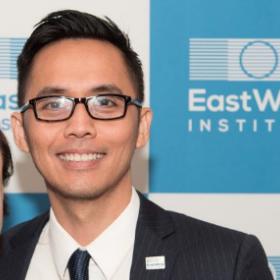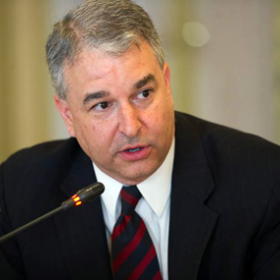
Firestein Reflects on Seven Years of U.S.-China Political Party Leaders Meetings
For the ninth time since 2010, the EastWest Institute organized meetings between delegations of U.S. Democratic Party and Republican Party leaders and Communist Party of China (CPC) senior officials as part of the U.S.-China High-Level Political Party Leaders Dialogue (P2P) on November 14 in Washington, D.C. Global business leaders also took part this year. David Firestein, EWI's Senior Vice President for the Strategic Trust-Building Initiative and Track 2 Diplomacy, discusses the significance of the dialogue process.
What was the idea behind the first P2P and what were the initial challenges?
P2P came out of a trip that EWI made to China in 2008, about a year after EWI launched its China program. We asked our Chinese counterparts what we, as an organization, could do in the service of U.S.-China relations that hadn’t already been done by others. Our senior Communist Party of China (CPC) interlocutors said that the one area in U.S.-China relations that had not been fully developed was the linkage between the principal political parties of the two countries: the CPC, the Democratic and Republican Parties of the United States. At the time, the CPC, as a party, had relations or dealings with just about every major political party in the world but for the two U.S. major parties. And with that suggestion, EWI set about the work of establishing the first-ever dialogue between these the major parties.
The process was not without its difficulties—mainly, political sensitivities on the U.S. side about the notion of dealing with the Communist Party of China. And we came to understand that whatever we were going to do would need to be done on a bipartisan basis, so that neither U.S. party would be able to criticize the other for engaging with China’s ruling party. With some diligence and perserverance, and with the involvement of the National Democratic Institute (NDI) and the International Republican Institute (IRI), we assembled the first bipartisan U.S. delegation to what came to be known as the “U.S.-China High-Level Political Party Leaders Dialogue”—or “P2P,” for short—in early 2010. That delegation was led by prominent Democrat and former U.S. Secretary of State Madeleine Albright and former George W. Bush Administration ambassador to the United Nations Rich Williamson. And on that visit, we had the honor of meeting then-Chinese Vice President and Politburo Standing Committee member Xi Jinping, among other senior leaders.
John Mroz, Richard S. Williamson and Madeleine K. Albright meet with then Vice President Xi Jinping in 2010.
How has P2P, as an event, evolved over the years? Are there more or less challenges in organizing the event?
The formal P2P process now has a history of nearly seven years. The most significant evolution of the process occurred in 2013, when we reached out to the Democratic and Republican Parties and invited sitting DNC and RNC officers to take part in the dialogue for the first time. Whereas in earlier convenings, we had featured prominent Democratic and Republican former statesmen, governors and legislators, as well as former DNC and RNC chairs, now we were also involving sitting DNC and RNC leaders and that added a new element to the talks; it was at this point that we could say we had created a true dialogue channel between the parties themselves. That was no mean feat, in my view; and when you really think about it, P2P might very well be the only formal dialogue mechanism that brings together sitting DNC and RNC officials into the same room and the same conversation—to say nothing of the CPC. So we were very proud of moving the P2P process in this direction and the representatives of the two U.S. party committees consistently characterized the process as being tremendously valuable in terms of increasing their understanding of the politics of a country that, arguably, is America’s most consequential bilateral partner.
Another major development over the years pertains to our substantive agenda. In the first few iterations of the dialogue, we delved into both domestic governance and foreign policy issues. But starting around 2013, we came to understand that our real value-added, as a process, was in the political and domestic governance areas, not in foreign policy, given how many official U.S.-China dialogue mechanisms are already in place with respect to that cluster of issues. So we deemphasized foreign policy and moved much more deeply into politics and domestic governance, which we regarded as P2P “comparative advantages.” To our knowledge, P2P represents the only ongoing, sustained senior dialogue about domestic politics—as distinct from policy—between the two sides. This is where P2P’s unique value really is to be found.
In terms of challenges, I would say that, overall, P2P is easier to run today than it was six years ago, mainly because there is a significant “constituency” for the dialogue now at very high levels. People in both China and the United States understand the process, value the process, and see the process as a unique channel for high-level political discussions that fill a gap in the U.S.-China relationship. It’s become much easier to recruit significant figures to take part in the dialogue than it was in the days before the dialogue existed or became well known in the U.S.-China field. That said, some challenges remain. For example, getting sitting members of the United States Congress to China for P2P visits remains problematic owing to Congressional ethics rules and constraints. And similarly, we now have to condense the visits to the United States and pack more into fewer days owing to new constraints governing these kinds of visits on the Chinese side (as a result of China’s ongoing anti-corruption and “anti-extravagance” campaign). But on the whole, P2P has become easier to execute.
What are some of P2P's achievements over the years in terms of U.S.-China relationship since the first meeting? Do officials from the two countries have easier access to each other? Are there any concrete bilateral cooperations at the country level that resulted from P2P?
P2P fills a unique niche in U.S.-China engagement; with P2P, EWI is doing something that had never been done and that isn’t being done by anyone else. In a sense, EWI, along with our Chinese partners, have a monopoly on the market with respect to the construct of a U.S.-China political party—and more generally, high-evel political—dialogue. So that’s one significant achievement in itself. Building on this point, I would add that EWI has orchestrated the highest-level joint (and, in fact only) DNC/RNC visits to China in history; the only interactions ever between the CPC and the chairs of the DNC and RNC (separately); and one of the relatively few, if not the only, joint visit to China by Cabinet-level officials of both the Obama and George W. Bush Administrations, among other milestones. And in China, we’ve met with Xi Jinping, current Vice President Li Yuanchao, Politiburo Standing Committee member and anti-corruption “czar” Wang Qishan, and numerous other top Chinese officials, including in the Zhongnanhai leadership compound. We have also created a platform for important and timely track 1.5 and track 1 (official) interactions between major foreign policy figures on both sides around such issues as North Korea; and P2P has been a platform for some of the deepest and most detailed discussions of Chinese foreign policy decision-making that have ever occurred between Chinese and U.S. counterparts. Finally, through P2P, CPC leaders came to meet with several of the “finalists,” in both the Democratic and Republican Parties, in the 2016 race for the U.S. presidency.
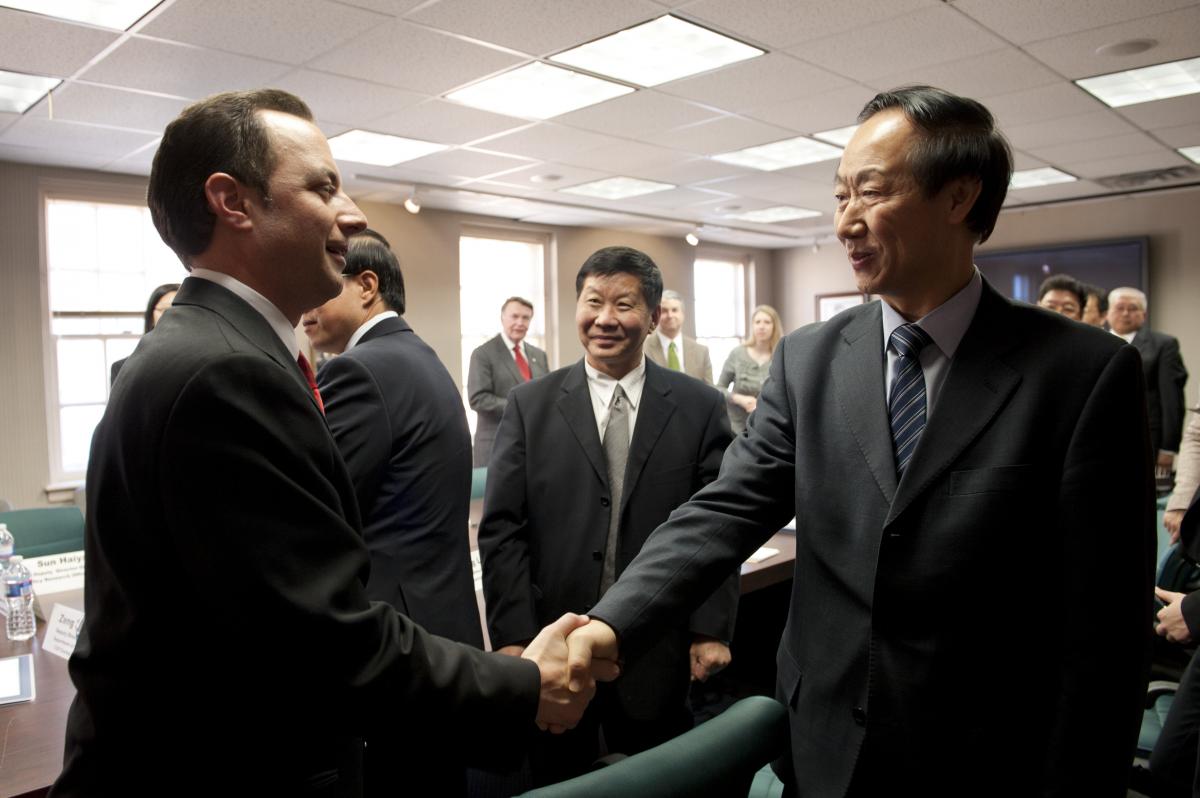
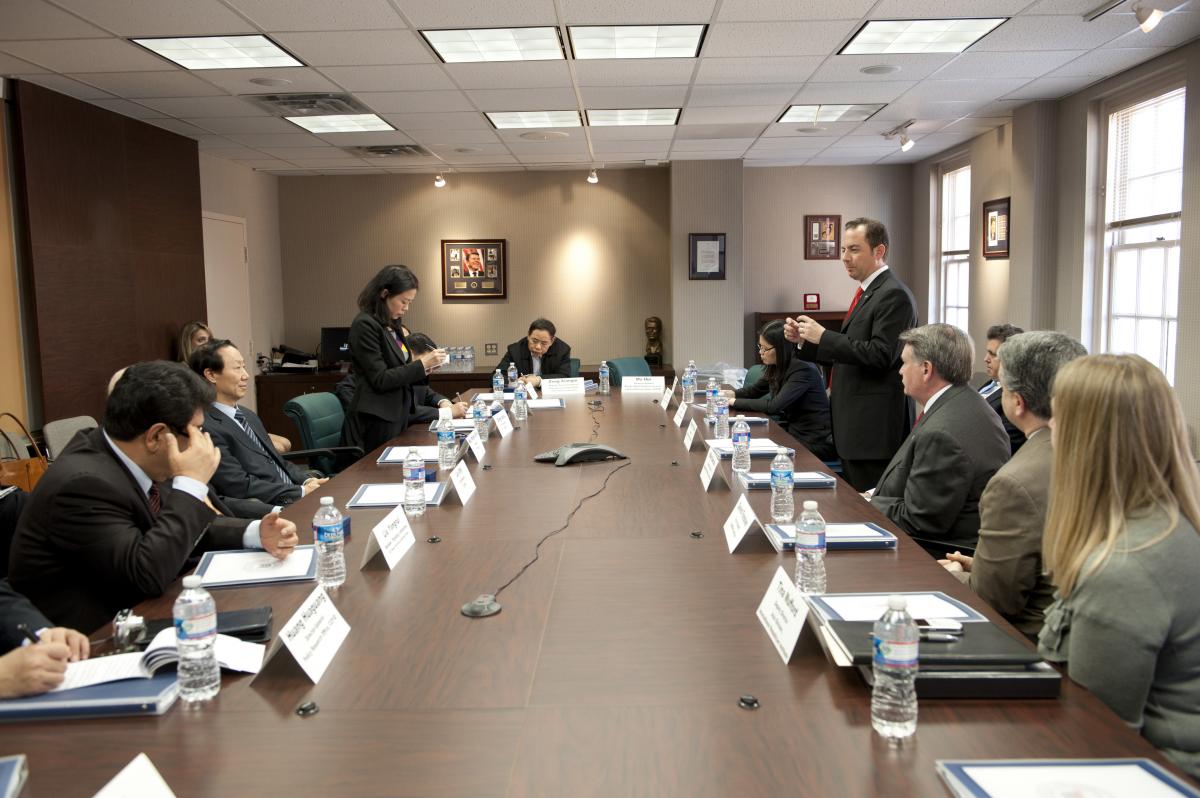
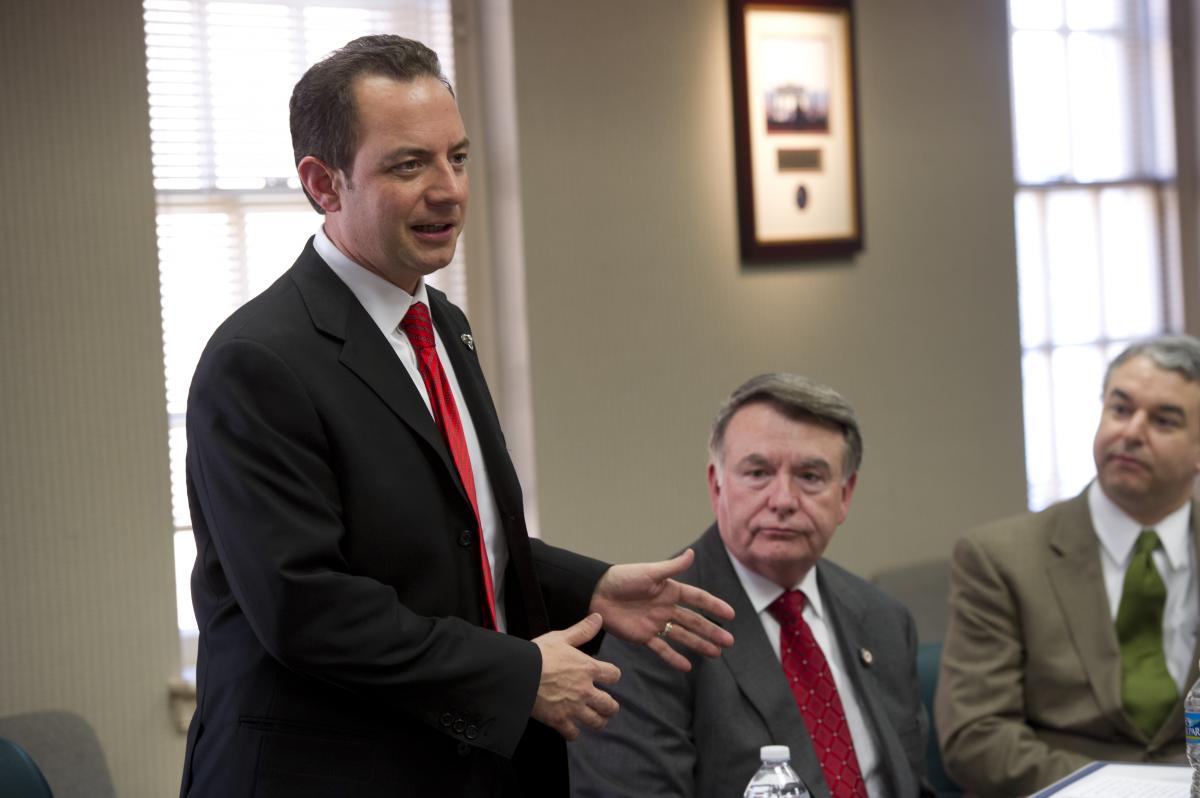
In 2011, EWI facilitated the first ever meeting between the Communist Party of China and the Republican National Committee Chair. From left to right: Reince Priebus (left) and Wang Jiarui; CPC delegation (left) meets with Reince Priebus (right, standing) and representatives from the Republican party and EastWest Institute; Reince Priebus (left), Mike Duncan and David J. Firestein.
How does the EastWest Institute follow up after each P2P event?
The primary goal of the P2P process is twofold: one, to increase U.S. and Chinese understanding of the politics of the other country and how those politics bear on policy choices; and 2) to establish and nurture relationships between key players on both sides that can serve as conduits for communications, particularly in times of need or stress in the relationship. After each P2P visit, we present a written summary of key points to major USG stakeholders (e.g., in the White House, State Department and Capitol Hill, primarily), and the Chinese similarly report the P2P proceedings to China’s top leadership. We don’t publish these summaries externally, but do generally publish a more general abstract of the meeting’s discussions.
EWI facilitated the highest-level tripartite major political party meeting in the history of U.S.-China relations:
U.S. Democratic and Republican delegates meet with Vice President Li Yuanchao (third from right) at the Great Hall of the People in Beijing in 2013.
How are the topics decided every year?
For each P2P session, EWI works closely with the CPC’s International Department—effectively, the Communist Party’s “foreign ministry,” if you will—to set the substantive agenda for the visit. As noted earlier, we now tend to focus on politics and domestic governance, rather than foreign policy; and within these broad rubrics, we tailor the specific topics to what’s currently happening in these areas at the time of the visit. Needless to say, for P2P9—on Nov. 14, 2016, just days after the U.S. presidential election—the election, the transition and the election’s (and the domestic political process’s) implications for U.S. China and Asia policy were all on the agenda, as well as a deep dive into U.S. public opinion (regarding the election, in particular). We also heard from the Chinese about China’s own political process and in the course of P2P10 (notionally planned for late 2017) will discuss the all-important 19th Party Congress.
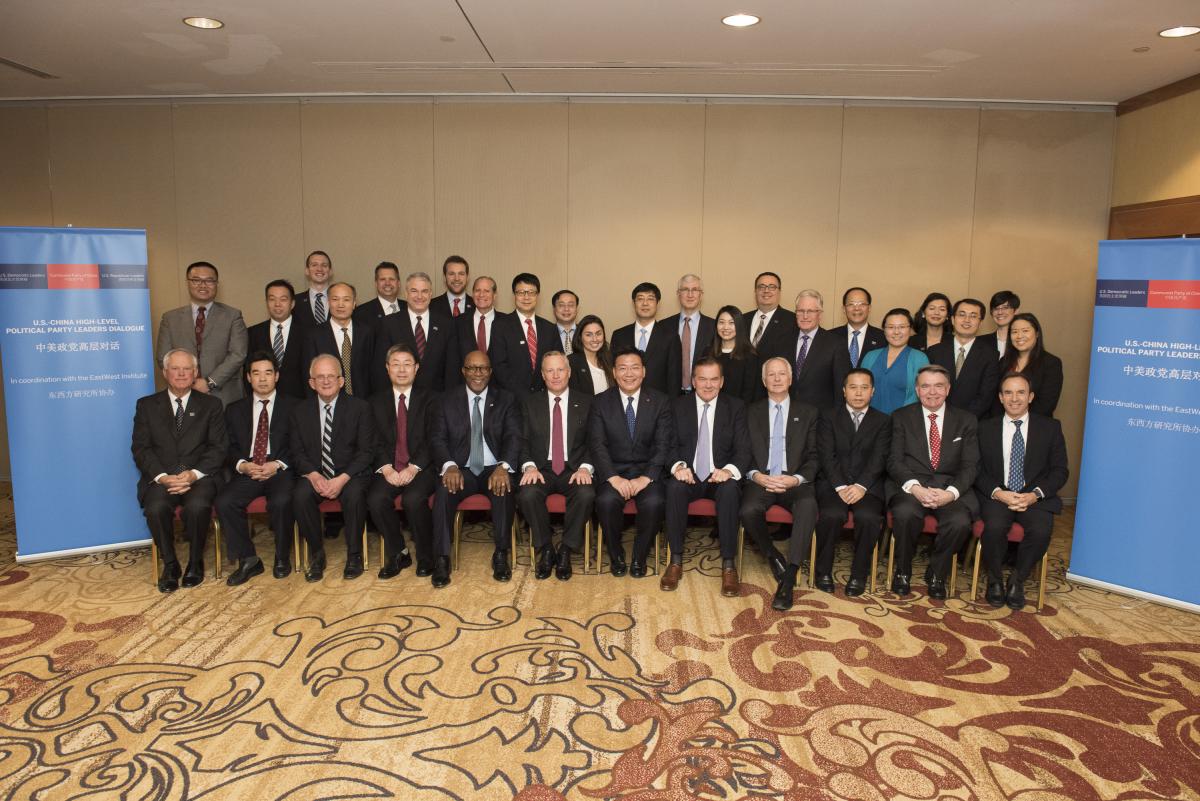
9th U.S.-China High-Level Political Party Leaders Dialogue
The EastWest Institute also organizes other annual U.S.-China events. How do these events complement or overlap each other? How have these separate events shaped, in any way, the relationship between the two countries?
EWI’s three U.S.-China track 2 (and track 1.5) dialogues focus on different areas and issue sets and, in this regard, tend to complement each other. P2P looks at politics and domestic governance, as I’ve mentioned. The U.S.-China Sanya Initiative (“Sanya”) brings together former U.S. and Chinese 4-star generals (including, on the U.S. side, former members of the U.S. Joint Chiefs of Staff, for example) to discuss military issues of mutual interest, with special emphasis on U.S.-China mil-mil issues and East Asian regional security issues. And the U.S.-China High-Level Security Dialogue (HLSD), which began in 2007, annually brings a distinguished group of U.S. former officials, military officers, think tank analysts and business leaders to China for a week to meet with Chinese counterparts from the Party, the government, the military, the think tank world and academia, and the business world to examine security issues of mutual interest to the United States and China.
Collectively, these dialogues have contributed to a deeper and broader understanding between significant U.S. and Chinese personages and between the two countries and, we believe, increased trust among the participants and between the countries. As the United States transitions from one presidency to the next, the need for this type of exchange remains substantial and we look forward to the work and opportunities ahead.
Related link: 9th U.S.-China Dialogue Explores Bilateral Relations Post U.S. Election
Click here to access publications from the institute's China, East Asia and the United States Program, including from the previous eight P2P events.


